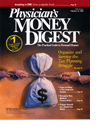Publication
Article
Physician's Money Digest
Select Your Ideal Long-term Investments
Author(s):
If you agree with what many of the market punditsare saying, that the market reverts back to an averagelong-term annual rate of return of 8% goingforward, then you're going to have to be very prudentwhen it comes to selecting investment securities forthe long term. Let's look at an example of a portfoliodesigned to address this specific concern.
Retirement Plan
Dr. Beverly Pepper, a divorced emergency roomphysician, age 59, wants to retire in the next couple ofyears. She has approximately $1.3 million currentlyinvested in mutual funds that have been, at best,mediocre performing funds, some of which werefront-end loaded (upfront sales charges: "A class"shares) and some of which were back-end loaded(deferred sales charges: "B class" shares). In addition,the internal management fees on the funds have averaged1% to 1.5% annually, and she is also beingassessed another 1.25% for having the account managedby an independent third-party advisor. Keep inmind that before she earns any money on her portfolio,the account must generate a high enough rate ofreturn to offset fees approaching 2.5% annually.
Should she decide to liquidate any of the B classshares, additional charges may be incurred upon disposition.Also, because her investment portfolio iscomprised of almost all large and mid cap growth-orientedfunds, there is virtually no dividend incomebeing generated on the portfolio.
As Dr. Pepper is approaching retirement age, havingall of these monies in equity-based, growth-orientedfunds may prove to be much too volatile for her risk tolerancelevel. Also, she hopes to generate an income fromher investments, but her current portfolio will not meetthis need, as there is essentially no dividend income currentlybeing generated by the underlying securities withinthe mutual funds that she holds.
Proper Portfolio
Ordinarily, a diversified mutual fund portfolio utilizingno-load institutional class shares broadly diversifiedamong the available asset classes would be recommendedfor Dr. Pepper. This approach wouldallow for the elimination of front-end and back-endsales charges and reduce the annual operating expensesassociated with managing these funds. Also,because she wishes to retire in the not too distantfuture, she should consider a balanced portfolio,which would reduce the volatility of her portfolio andlimit her exposure to stock market risk.
As such, potential returns would be less than whatshe could expect with a more aggressive portfolio ingood times. However, at this stage of her life, Dr. Peppershould not be seeking to maximize her return as much asshe should be attempting to minimize her risk for anacceptable level of return. Remember the old adages,
Investment Option
Given the size of the portfolio in question,it would be possible to construct aportfolio of securities that would reducethe volatility of her portfolio, reduce theannual portfolio expenses, and generatedividend and interest income.
This plan would limit all security positionsin the portfolio to around 2% to2.5%. In this manner, given a portfolio of$1.3 million, a physician-investor wouldbe able to adequately diversify into 40 to50 individual securities across several businesssectors, and the portfolio constructedwould be balanced between roughly 70%equity and 30% fixed-income securities.
Since the portfolio is taxable, Dr.Pepper should place the fixed-incomeportion of the portfolio into municipalsecurities and Treasury income protectedsecurities (in anticipation of inflation andhigher interest rates). With the municipalsecurities portion of the portfolio, Dr.Pepper should limit the maturity to 5 to 7years to protect against interest rate risk.
To maximize her portfolio, Dr. Peppershould select equity securities in companiesthat have low price-to-earnings multiples,good dividends, little or no debt ontheir balance sheet, good cash flow, anannualized increase in earnings and dividends,good returns on shareholder equityand return on assets, and no questionableliabilities that might be incurreddown the road, such as an underfundedpension liability.
The objective would be to generate anannual capital appreciation on the equityside of the portfolio that generates a yieldof 4% to 5%. In this way, before anyinvestment advisory fees, one could aimfor an annualized rate of return (dividends,interest, and capital appreciation)of 7.5% to 9.5%. After an advisory fee of1%, Dr. Pepper should be able to netaround 6.5% to 8.5% on her portfolioand reduce stock market risk.
It is important to note that selectingequity securities that meet the above criteriawould exclude many growth-orientedcompanies in the information technology,software, hardware, telecommunications,and health care sectors, and mostlikely would include value-oriented companiesin the financial services, energy,and utilities sectors of the economy.
This strategy might not be appropriatefor someone who has a long-term horizonrelative to retirement and a smalleramount of capital to invest. However, itwould prove to be a prudent investmentstrategy for someone seeking to generateincome and realize some capital appreciationon their investment portfolio.
and his partner,
Harris L. Kerker, are principals
of the Asset Planning
Group in Miami, Fla, specializing
in investment, retirement,
and estate planning. Mr. Kosky
teaches corporate finance in the
Saturday Executive and Health Care Executive
MBA Programs at the University of Miami. He welcomes
questions or comments at 800-953-5508, or
visit www.assetplanning.net.
Thomas R. Kosky
